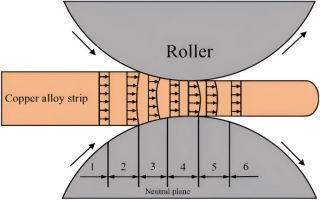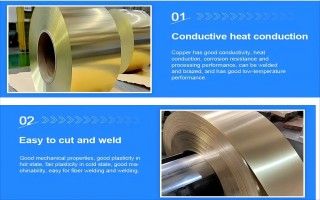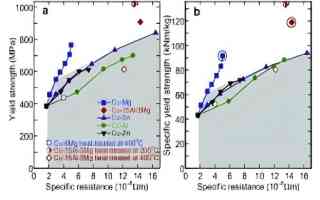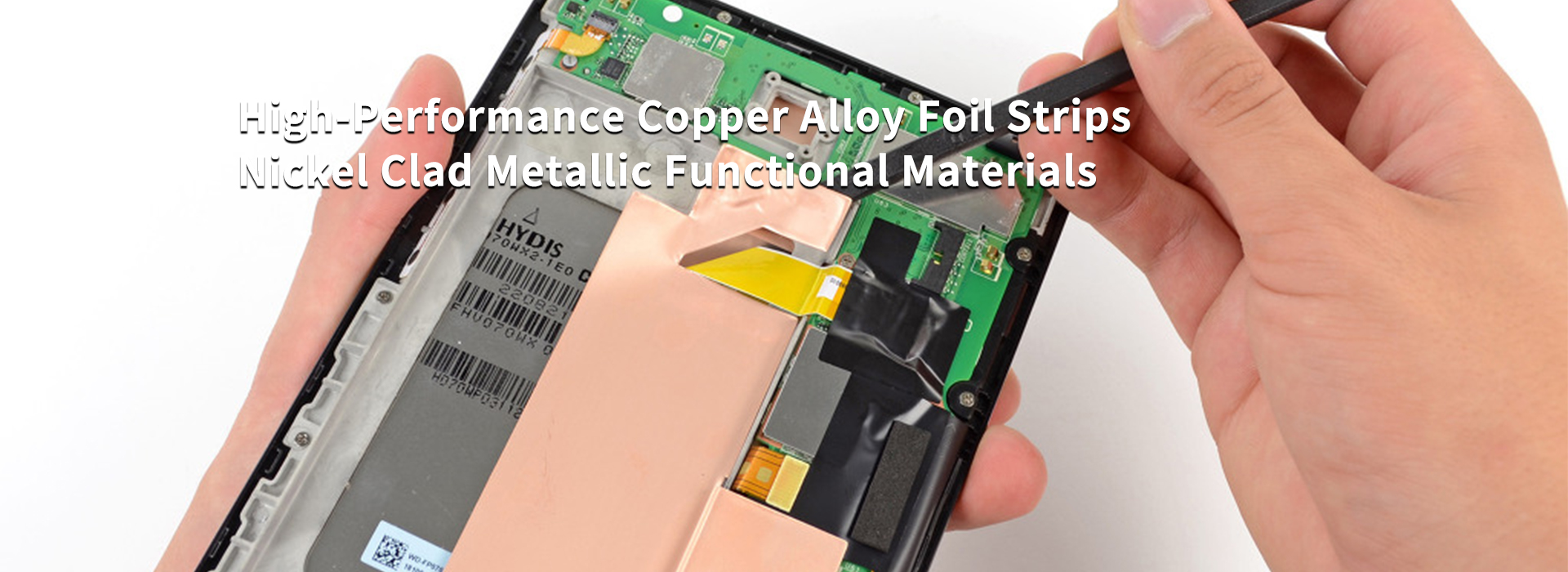 Research & Development
Research & Development
 HOME > TECHNOLOGIES >
HOME > TECHNOLOGIES >
Research and development of copper alloy strips
2019-03-01
Copper alloy strips are widely used in the field of modern electronics industry, with good electrical conductivity, thermal conductivity and formability. We practice the development concept of "alloys for today and for the future", "China manufacturing advantages and international alloy standards", and establish long-term strategic cooperation with many domestic and foreign colleges and universities of materials and copper-nickel precision rolling processing companies. Combining the solid professional knowledge of the company's R&D team and the actual application scenarios of the operation team, we promote the "industry-university-research" project between universities and enterprises, and are committed to the research and development of metal alloy materials originating in China, and enhance the competitiveness of China's manufacturing in the international market. We continue to innovate technology, and have obtained 4 national invention patents and a number of utility model patents to ensure that we are at the forefront of the industry in terms of material performance and application technology.
Research status:
3.copper alloys : By using technical means such as metallographic microscopes and scanning electron microscopes, the organizational structures of different copper alloys, including grain size, grain boundary characteristics, etc., were studied. Research has found that adding appropriate amounts of other elements to the alloy can significantly change the structure and properties of the alloy.
4.Research on the mechanical properties of copper alloys: The mechanical properties of copper alloys were studied through tensile tests, hardness tests and other means. Research has found that properties such as strength, toughness and hardness of alloys can be adjusted by adding different elements to meet the needs of different application fields.
4.Research on the corrosion resistance of copper alloys: Copper alloys are prone to corrosion in some special environments, so studying their corrosion resistance and corrosion behavior is of great significance to their applications. Research has found that the corrosion resistance of copper alloys can be improved by adding appropriate amounts of iron, chromium and other elements.
Future research directions:
4.Research on diversified copper alloys: Currently, research on copper alloys mainly focuses on the addition of a single element. In the future, we can explore the development of multi-element copper alloys. By adding multiple elements, more diverse properties can be obtained, further broadening the application areas of copper alloys.
5.Research on microstructure control: By combining advanced technologies such as heat treatment and cold deformation, we explore methods of microstructure control to further improve the performance of copper alloys. For example, by controlling grain size and grain boundary characteristics, we can achieve optimization of high strength and high toughness of the alloy.
6.Research on the expansion of technology applications: Currently, copper alloys are mainly used in electronics, aerospace and other fields, and their application areas can be further expanded in the future. For example, explore the application of copper alloys in new energy, medical equipment and other fields to promote the development of the industry.
In conclusion:
Our company has made a lot of progress in the research of copper alloy strips , but there are still some research gaps and challenges. Future research directions mainly include the research of diversified copper alloys, the research of microstructure regulation and the research of technology application expansion. Through continuous and in-depth research, the performance and application of copper alloys will be further improved, providing better support and promotion for the development of various fields.
Research status:
3.copper alloys : By using technical means such as metallographic microscopes and scanning electron microscopes, the organizational structures of different copper alloys, including grain size, grain boundary characteristics, etc., were studied. Research has found that adding appropriate amounts of other elements to the alloy can significantly change the structure and properties of the alloy.
4.Research on the mechanical properties of copper alloys: The mechanical properties of copper alloys were studied through tensile tests, hardness tests and other means. Research has found that properties such as strength, toughness and hardness of alloys can be adjusted by adding different elements to meet the needs of different application fields.
4.Research on the corrosion resistance of copper alloys: Copper alloys are prone to corrosion in some special environments, so studying their corrosion resistance and corrosion behavior is of great significance to their applications. Research has found that the corrosion resistance of copper alloys can be improved by adding appropriate amounts of iron, chromium and other elements.
Future research directions:
4.Research on diversified copper alloys: Currently, research on copper alloys mainly focuses on the addition of a single element. In the future, we can explore the development of multi-element copper alloys. By adding multiple elements, more diverse properties can be obtained, further broadening the application areas of copper alloys.
5.Research on microstructure control: By combining advanced technologies such as heat treatment and cold deformation, we explore methods of microstructure control to further improve the performance of copper alloys. For example, by controlling grain size and grain boundary characteristics, we can achieve optimization of high strength and high toughness of the alloy.
6.Research on the expansion of technology applications: Currently, copper alloys are mainly used in electronics, aerospace and other fields, and their application areas can be further expanded in the future. For example, explore the application of copper alloys in new energy, medical equipment and other fields to promote the development of the industry.
 |
 |
 |
In conclusion:
Our company has made a lot of progress in the research of copper alloy strips , but there are still some research gaps and challenges. Future research directions mainly include the research of diversified copper alloys, the research of microstructure regulation and the research of technology application expansion. Through continuous and in-depth research, the performance and application of copper alloys will be further improved, providing better support and promotion for the development of various fields.





